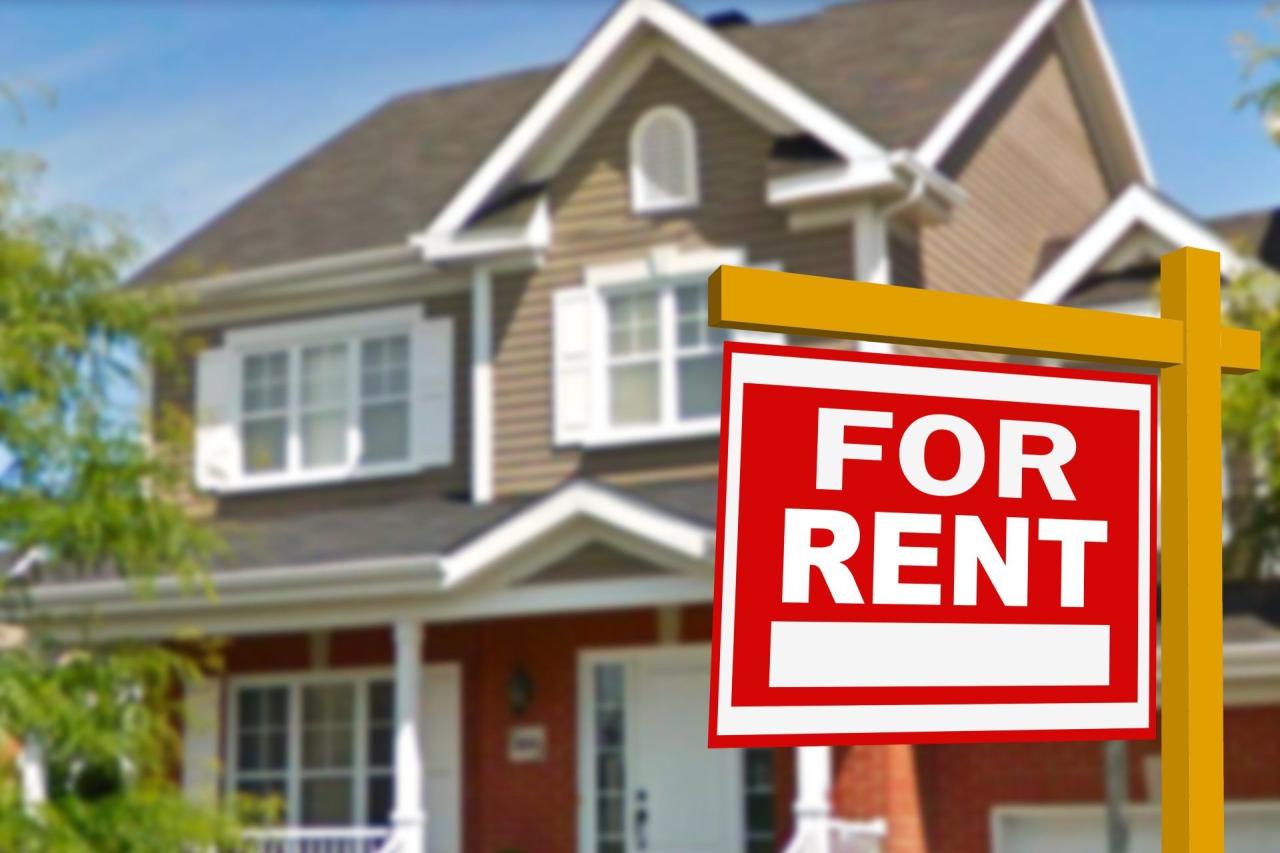The global rental market is currently experiencing a profound transformation, driven by a convergence of economic shifts, demographic changes, and evolving lifestyle preferences. What was once a stable, albeit sometimes overlooked, segment of the real estate industry has now become a dynamic and highly competitive landscape. Understanding the intricacies of this boom, from soaring demand to innovative living solutions, is paramount for renters, landlords, investors, and urban planners alike. This comprehensive article delves deep into the factors propelling the rental surge, its multifaceted impacts, and the emerging trends that are redefining the future of renting.
The Drivers of the Rental Surge

The current boom in rental markets isn’t a singular phenomenon but rather a culmination of several powerful forces acting in concert. These drivers create a robust demand for rental properties while simultaneously influencing the supply dynamics.
A. Economic Imperatives and Housing Affordability Crisis
At the core of the rental market’s buoyancy lies the escalating challenge of homeownership affordability. For many, purchasing a home has become an increasingly unattainable dream, pushing them into the rental sector.
- High Home Prices: A prolonged period of low housing inventory, coupled with sustained buyer demand (even amidst fluctuating interest rates), has driven home prices to historic highs in many major cities and even secondary markets globally. This makes the upfront costs of a down payment and closing fees prohibitively expensive for a large segment of the population.
- Rising Interest Rates: Central banks worldwide have implemented interest rate hikes to combat inflation. While necessary for economic stability, these increases directly translate to higher mortgage payments, significantly impacting affordability. A seemingly small percentage point increase can add hundreds of dollars to a monthly mortgage, effectively pricing out a substantial portion of potential homebuyers. This forces more individuals to remain in the rental pool for longer periods, intensifying demand.
- Inflationary Pressures: Beyond interest rates, general inflation affects every aspect of life, including the cost of living. While wages might see some increases, they often lag behind the soaring costs of housing, both for purchase and rent. This erosion of purchasing power makes saving for a down payment even more challenging for aspiring homeowners.
- Student Loan Debt Burden: For younger generations, the significant burden of student loan debt can severely impede their ability to save for a down payment or qualify for a mortgage. This debt often delays or completely derails their path to homeownership, keeping them in the rental market for an extended duration.
B. Demographic Shifts and Lifestyle Preferences
Beyond economic constraints, fundamental changes in population demographics and evolving lifestyle choices are profoundly shaping rental demand.
- Delayed Homeownership Among Younger Generations: Millennials and Gen Z are, on average, delaying homeownership much longer than previous generations. This is due to a combination of factors including student debt, later marriage and family formation, and the aforementioned affordability issues. Their prolonged presence in the rental market sustains high demand for rental units.
- Increased Urbanization: Despite the remote work trend, many still gravitate towards urban centers for job opportunities, cultural amenities, and social connections. Cities, particularly those with vibrant economies, continue to attract large populations who predominantly rely on rental housing due to its flexibility and the high cost of urban property ownership.
- Flexibility and Mobility: A growing segment of the population values flexibility and mobility. Renting offers the freedom to relocate for job opportunities, personal reasons, or to explore new cities without the long-term commitment and transaction costs associated with buying and selling property. This is particularly appealing to young professionals and individuals in dynamic industries.
- Smaller Household Sizes: The global trend towards smaller household sizes (e.g., more single-person households, couples without children) means a greater number of individual housing units are needed to accommodate the same population. This increases the overall demand for smaller rental units like studios and one-bedroom apartments.
C. Technological Advancements and Remote Work
The digital revolution and the widespread adoption of remote work have had a paradoxical yet significant impact on the rental market.
- Decentralization of Demand: While remote work initially seemed to herald an exodus from cities, it has, in fact, diversified rental demand. People can now seek more affordable or spacious rentals in suburban, exurban, or even smaller regional cities, which are experiencing unprecedented rental growth. This has led to a geographic redistribution of rental demand.
- Digitalization of Rental Process: Technology has streamlined the rental search and application process. Online listings, virtual tours, digital applications, and e-signatures make it easier and faster for prospective renters to find and secure properties, increasing the efficiency of the market. This improved accessibility can also contribute to quicker absorption of available units.
- Growth of Short-Term Rentals: The proliferation of platforms like Airbnb has converted a significant portion of potential long-term rental units into short-term accommodations, especially in tourist-heavy areas. While offering economic benefits to property owners, this trend can reduce the supply of affordable long-term rentals, putting upward pressure on rents.
Current Market Dynamics
The confluence of these drivers has created distinct characteristics within the current global rental market.
A. Soaring Rental Prices and Reduced Affordability
The most immediate and impactful consequence of the rental boom is the relentless rise in rental prices across most major markets.
- Historic Rent Hikes: Many cities have reported double-digit percentage increases in average rents over recent years, far outstripping wage growth in many regions. This phenomenon is straining household budgets and forcing difficult choices for renters.
- Decreased Rental Affordability: The proportion of income that households spend on rent is steadily increasing, leading to a severe decline in rental affordability. For low- and middle-income individuals and families, finding suitable and affordable housing has become an immense challenge.
- Intense Competition: With limited supply and high demand, competition for available rental units is fierce. This often results in bidding wars, long queues for viewings, and swift absorption of new listings, leaving many renters feeling desperate and stressed during their search.
B. Low Vacancy Rates
A critical indicator of a tight rental market is low vacancy rates. When few units are empty, it signifies high demand relative to supply.
- Supply-Demand Imbalance: In many desirable locations, the rate of new rental unit construction simply hasn’t kept pace with the burgeoning demand, leading to historically low vacancy rates. This imbalance is a primary driver of rent increases.
- Impact on Tenant Bargaining Power: Low vacancy rates severely diminish tenants’ bargaining power. Landlords often have multiple applicants to choose from, allowing them to be more selective and less inclined to negotiate on rent or terms.
- Limited Choice for Renters: The scarcity of available units means renters have fewer options, often forcing them to compromise on location, size, or amenities, or to extend their search periods considerably.
C. Investor Focus on Rental Properties
The attractive returns in the rental market have drawn significant attention from investors, both individual and institutional.
- Single-Family Rental (SFR) Growth: Institutional investors are increasingly purchasing single-family homes to convert into rentals, recognizing the robust demand and stable income streams. This trend has been particularly notable in suburban growth markets.
- Build-to-Rent Communities: Developers are increasingly constructing entire communities specifically designed for rental purposes (“build-to-rent”). These often feature amenities akin to traditional for-sale developments, catering to those who prefer renting but desire a community feel.
- Attractive Yields: Compared to other asset classes, rental properties, particularly in high-demand areas, can offer attractive rental yields (the annual income generated by a property as a percentage of its value), drawing capital from diverse investment portfolios.
D. Emerging Rental Models and Innovation
The pressures of the rental market are also fostering innovation in how people live and what rental properties offer.
- Co-Living Spaces: Designed for community and affordability, co-living spaces offer private bedrooms within shared communal areas. They often come furnished and include utilities, appealing to young professionals and digital nomads seeking flexible and social living arrangements.
- Flexible Lease Terms: To cater to the mobile workforce and those seeking less commitment, landlords are increasingly offering more flexible lease terms, including shorter durations and options for month-to-month extensions.
- Tech-Enabled Rental Management: Property managers are leveraging technology for everything from smart locks and online rent payments to predictive maintenance and tenant communication platforms, enhancing efficiency and the resident experience.
- Rent-to-Own Programs: While not new, there’s renewed interest in rent-to-own schemes as a pathway to homeownership for those struggling with down payments. These programs allow a portion of rent payments to accumulate as equity towards a future purchase.
Impacts and Implications

The rental boom has wide-ranging impacts on individuals, communities, and the broader economy.
A. On Renters
- Increased Financial Strain: Rising rents consume a larger portion of household incomes, leaving less discretionary income for other necessities, savings, and investments. This can lead to increased financial stress and a reduced quality of life.
- Delayed Life Milestones: The inability to afford homeownership or secure stable, affordable rental housing can delay significant life milestones such as marriage, starting families, or building long-term wealth through property ownership.
- Forced Relocation and Displacement: Escalating rents in desirable areas can lead to the displacement of long-term residents, particularly low-income families and essential workers, forcing them to move further away from jobs, schools, and social networks.
B. On Property Owners and Investors
- Higher Rental Income and Property Values: For existing landlords and investors, the rental boom generally translates to higher rental income streams and increased property valuations due to strong demand.
- Increased Competition for Acquisitions: The attractive returns also mean heightened competition when acquiring new rental properties, potentially driving up purchase prices and eroding profit margins for some investors.
- Maintenance and Management Challenges: While income rises, managing rental properties comes with responsibilities. Increased tenant turnover due to affordability issues or competition, and the need for regular maintenance, require dedicated effort and resources.
C. On Communities and Urban Planning
- Demographic Shifts in Neighborhoods: As rental costs soar, neighborhoods can experience significant demographic shifts, potentially losing their original character and diversity. This can strain local services and community cohesion.
- Demand for Infrastructure Development: The migration of renters to suburban and exurban areas creates new demands for infrastructure development, including public transportation, schools, healthcare facilities, and retail services in previously less populated regions.
- Challenges for Local Economies: When essential workers (e.g., teachers, nurses, first responders) cannot afford to live in the communities they serve, it can lead to labor shortages and negatively impact the quality of public services.
- Policy Responses and Regulations: Governments are increasingly under pressure to address the rental affordability crisis. This is leading to discussions and implementations of various policies, including rent control measures, increased affordable housing mandates, and incentives for developers to build more rental units.
Navigating the Future of Renting
The rental market is dynamic, and adapting to its evolving landscape is key for all stakeholders.
A. For Renters
- Budget Diligently: Create a realistic budget, factoring in not just rent but also utilities, transportation, and other living expenses. Understand how much you can truly afford and stick to it.
- Expand Your Search Radius: Consider broadening your search to include less conventional neighborhoods or even nearby towns that might offer better value for money. Remote work flexibility can aid this strategy.
- Be Prepared and Act Quickly: Have all necessary documentation (proof of income, references, credit report) ready to submit immediately when you find a suitable property, as desirable units often go off the market very fast.
- Understand Your Lease Terms: Thoroughly read and understand all clauses in your lease agreement, including renewal options, rent increase clauses, and maintenance responsibilities, before signing.
B. For Landlords and Property Managers
- Prioritize Tenant Retention: In a competitive market, retaining good tenants is often more cost-effective than constantly seeking new ones. Offer excellent service, timely maintenance, and consider fair rent adjustments for renewals.
- Leverage Technology: Utilize property management software for efficient rent collection, maintenance requests, communication, and tenant screening. Smart home technologies can also attract and retain tenants.
- Stay Informed on Regulations: Keep abreast of local and national rental laws, including rent control measures, tenant rights, and eviction moratoriums, to ensure compliance and avoid legal issues.
- Consider Value-Added Amenities: To stand out in a competitive market, consider offering amenities that appeal to modern renters, such as high-speed internet, pet-friendly policies, fitness centers, or co-working spaces within the property.
C. For Investors
- Conduct Thorough Due Diligence: Research local market trends, vacancy rates, average rents, and demographic projections before investing in any rental property. Understand the specific demand drivers in that area.
- Diversify Your Portfolio: Don’t limit investments to a single type of rental property or geographic location. Diversifying across different segments (e.g., single-family, multi-family, student housing) can mitigate risk.
- Focus on Long-Term Growth and Cash Flow: While property appreciation is desirable, prioritize properties that offer strong, consistent cash flow from rental income, as this provides stability regardless of short-term market fluctuations.
- Explore Emerging Niches: Look into specialized rental markets such as senior living, affordable housing, or purpose-built student accommodation, which may offer unique opportunities and less direct competition.
Conclusion
The global rental market is undergoing a significant transformation, marked by unprecedented demand, rising prices, and innovative adaptations. While it presents considerable challenges for renters grappling with affordability, it also offers robust opportunities for investors and developers who can meet the evolving needs of a growing tenant base. As economic conditions continue to shift and lifestyle preferences evolve, the rental market will remain a crucial and dynamic component of the broader real estate landscape. Understanding its drivers, navigating its complexities, and embracing its innovations will be key to success in this pivotal sector.













